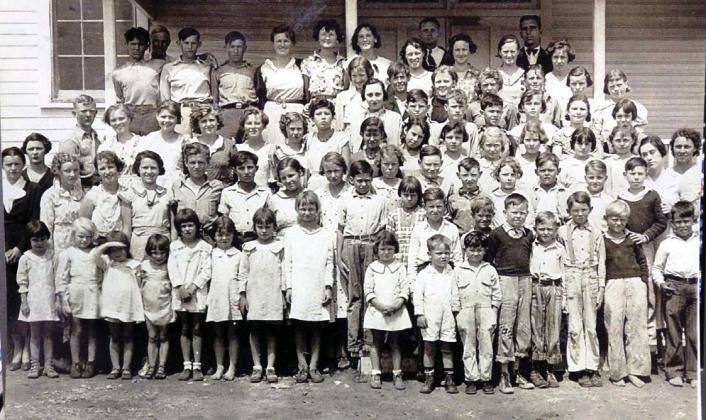The history of Edna Hill Community has deep ties with the cattle trail history of the old American West.
The old Cora Cattle Trail started below Gustine at the end of the South Leon River and Deep Creek. The Cora Cattle Trail started at Cora, then went up through Hazeldale, through Edna Hill and continuing to Dublin.
Cora was picked to have a courthouse because that is where the main crossing at the Leon River for the military trail from Fort Gates in Gatesville to the western line of forts on the Texas frontier that Sam Houston authorized.
That was the supply route from Fort Gates to the western forts. They called this route the Corn Trail because they were hauling corn to feed the horses at the line of forts on the Western Frontier.
The line of forts were built on the Indian Line. Indians were west of that line. Farmers and ranchers were on the east side of that line. The forts were built to protect the farmers and ranchers from Indian raids.
In 1894 John Chesley Gilbreath, former Erath County Sheriff, got the right of way surveyed on the Cora Trail that later became highway 1702 . What we now call Edna Hill was a half way point between Hazeldale and Dublin.
John Chesley Gilbreath had just finished the surveying of the Cora Trail when he was killed on his farm by a cotton wagon. The route that Chesley Gilbreath mapped out was a shorter route to Hazeldale rather than having to go to Purvis then crossing the creek several times to reach the Resley Creek Community.
It was not until 1952 or 1953 that FM 1702 was paved and became what is now known as the Edna Hill road. At that time the highway department only paved to the Gilbreath house on the highway because of funding. In 1962 they continued the paving to complete the road to highway 36.
A guy named Jim Wells built a hotel at the halfway point we call Edna Hill. It was located about 11 miles to Hazeldale and about 10 miles to Dublin. The hotel was located about a quarter of a mile from the trail. It was built during the end of the cattle trail days. The hotel itself was simply a business venture. It had six rooms. The community of Edna Hill developed around it.
The Edna Hill name really did not exist until 1904. It was then, the community applied for a post office. When filling out the paperwork, they named the community Edna, Texas named for Edna Russell.
When the application was considered by postal officials, they said there was already an Edna, Texas near Houston. It was post office policy that no two towns in a state can have same name. So community members decided that they would just call it Edna Hill since it was located on a hill. The hotel eventually became the Frank Barbee house and was moved about a mile off the road. With the coming of the paved highway, FM 1702 still follows the Old Cora Trail.
Eventually a school was built in Edna Hill in1908. This school and the adjoining homes built up around the hotel. By 1912 or 1914 there were 167 students at that school. The community followed Resley Creek because of the water it provided.
Further down the Cora Trail the highest point was a community called Sand Mountain. There was a general store located there. When Edna Hill started to develop, Uncle John Barbee and Crockett Coppell bought the store and attempted to move it to Edna Hill.
During the move they went through a wet sand field. The building and the wagons sank into the sand. At that point there was no way to move it.
The building sat there for about 6 months until the sand dried out and they could finally move it. The building was moved one more time later.
Doc Brown who was Jake Brown’s father, had the original blacksmith shop in Edna Hill. Eventually he came to Dublin and established a blacksmith shop. Edna Hill had a telephone exchange, a barber shop, post office, mercantile store, Baptist Church, Methodist Church, cotton gin and at one time 30 houses..
All of them were located on a three acre lot. The school sat behind those businesses on the hill. It was on a 4 acre lot.
Edna Hill is still an important part of the Dublin Community and we share it’s rich history.
This article was made possible by an oral interview with Harrell Gilbreath. We thank him for this important information.


